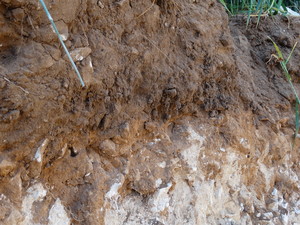UK growers would benefit from using non-inversion tillage systems for cereal production according to results of soil and cultivation research carried out by NIAB TAG, the James Hutton Institute (JHI) and the University of Aberdeen.
The AHDB-funded research, using a set of unique long-term field experiments, supported by a broad range of government and charitable organisations, means the impact of adopting inversion tillage or non-inversion tillage approaches in cereal production systems is now better understood, with no strong reason not to use non-inversion tillage in preference to ploughing.
NIAB TAG soil specialist Dr Nathan Morris explained that the results took into account gross margins, soil management, grassweeds, and soil biology. “One of the outcomes may be a market for varieties specifically bred to perform under non-inversion tillage crop production systems.”
NIAB TAG and the James Hutton Institute host the oldest contemporary tillage experiments in the UK, comparing non-inversion tillage and conventional ploughing/harrowing. Three of the field experiments had already been running from between four and nine years at the start of the project, and all will continue for the foreseeable future as our research develops further.
The project sites were:
- JHI’s Mid-Pilmore platform established on a sandy loam soil in Perthshire in 2003, contrasting five different soil management treatments
- NIAB TAG’s New Farming Systems project established in 2007 on a sandy loam soil in Norfolk, contrasting three soil management treatments
- NIAB TAG’s STAR experiment established in 2005 in Suffolk on a clay loam soil, contrasting three soil management treatments
- JHI’s Centre for Sustainable Cropping in Perthshire, established in 2011.
Further details on the research outcomes are outlined in the original AHDB Press Release below.
 AHDB PRESS RELEASE
AHDB PRESS RELEASE
Inversion and non-inversion tillage systems compared
The impact of adopting inversion tillage or non-inversion tillage approaches in cereal production systems is now better understood, thanks to a new report from AHDB.
The report draws conclusions from a series of long-term field experiments, which were used to compare the two approaches in various rotational and soil-type settings at sites in England and Scotland.
Although yields were marginally lower in the non-inversion system, a reduction in costs (labour and fuel) meant that non-inversion tillage could be advocated under ‘normal’ conditions.
Consistent with published findings on no-till, however, non-inversion approaches were found to be more vulnerable to grass weed control challenges, which limits its blanket application.
Dr Amanda Bennett, who manages natural resources research at AHDB, said: “Data from long-term trials indicate non-inversion approaches can exacerbate grass weed issues, compared to rotational plough-based systems, especially meadow brome, sterile brome and black-grass.”
As part of the research, soil cores were extracted throughout the season at the trial sites. These were then analysed to measure the effect of tillage on soil quality and function.
A key finding was that, after corrections for soil bulk density and stone content, no advantage in carbon sequestration was detected with non-inversion approaches.
Soil physical condition was also found to be well below optimal at all the sites used to examine tillage approaches, at a level sufficient to impede root proliferation. The findings provide further evidence of the need to find practical ways to measure and improve soil health.
As non-inversion and no-till systems are being more widely adopted in the UK, the authors identified a need to match crop genotypes with soil conditions. It was suggested breeding programmes and trialling systems could be used to develop varieties which excel under soil conditions commonly found in UK systems.
The production of cereal varieties better suited to reduced tillage systems could help narrow the yield gap and make such approaches more viable for UK growers.
Amanda said: “As the best cultivation choice depends so much on local conditions, the fine detail from this latest research will be used within the AHDB Farm Excellence Platform to help growers identify the right options for their crop production systems.”
The research, which was led by the James Hutton Institute, used long-term experiments supported by a broad range of government and charitable organisations.
For information on AHDB soil research and to access the full report (Final Project Report 574), visit cereals.ahdb.org.uk/research

